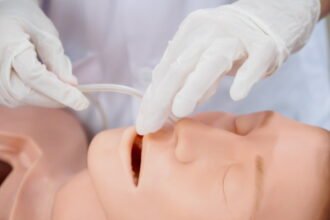One of the most common mental health issues affecting more than 3.5% of adults in the U.S. is Post-Traumatic Stress Disorder or PTSD. People who have seen or been in a traumatic event are afflicted by this psychiatric disorder. These traumatic events include terrorist attacks, natural disasters, rape or other forms of sexual violence, and death threats.
It’s important to learn how to manage PTSD as its symptoms can cause nightmares, uncontrollable fear about specific events, and severe anxiety. Over time, these symptoms could get worse and disrupt your daily life and affect relationships.
Fortunately, many people with PTSD could continue to work and do activities by following the tips listed below.
1. Get More Exercise
Overcoming and healing childhood trauma in adults could come off easier when you incorporate physical activities into your lifestyle. This may help you release endorphins and relieve stress. By exercising regularly, your nervous system could become ‘unstuck’ so you can move out of the immobilization phase caused by the trauma.
Use exercise to manage PTSD by trying out:
- Martial arts, rock climbing, and weight training: These exercises will require you to focus on your body movements to ensure safety.
- Rhythmic exercises: Rhythmic exercises that engage the arms and legs are a great way to manage PTSD. When you spend time walking, swimming, or dancing, you can focus on how your body feels.
- Spend more time outdoors: Outdoor activities, such as camping, hiking, and whitewater rafting can bring relaxation and peace, making it easier for you to get back on track. If you want to spend time outdoors with a group, reach out to local organizations in your area and inquire about team-building or recreational activities.
2. Reach Out To Other People For Support
Because of fear resulting from the traumatic event, it’s common for people with PTSD to withdraw themselves from social activities. Some may even feel disconnected from their friends and family and end up isolating themselves for weeks or months.
If you’re suffering from PTSD, you might want to consider doing the opposite. It’s best to reach out to other people for guidance and stay connected with individuals who care about you. Being surrounded by people who understand your journey could help you recover safely.
Once you’re with friends and family, you’re not obligated to open up or answer questions about the trauma if you’re uncomfortable. If you do talk about the trauma, make sure that you do it with individuals who don’t judge or criticize your situation.
Aside from reaching out to friends and family, you can also try out volunteering. This will enable you to experience a greater sense of control, which is vital because it is thought that PTSD often leads to a heightened sense of helplessness.
3. Support Treatment With A Healthier Lifestyle
PTSD can cause long-term effects, namely insomnia, anxiety, and chronic pain. When left untreated, these symptoms can take a toll on your mental and physical health. It might also significantly affect the quality of your life. In some cases, these symptoms can even strain relationships, making it challenging for you to build and maintain them.
The symptoms of PTSD can be hard on your mind and body, which is why it’s important to take care of yourself. If you want to manage PTSD and live life to the fullest, you need to incorporate healthy lifestyle habits, namely:
- Prioritize relaxation: You should always find time to relax. Relaxation techniques, such as deep breathing, yoga, massage, and meditation, might activate the body’s natural relaxation responses and help ease symptoms of PTSD.
- Avoid alcohol and drugs: If you see yourself struggling with traumatic memories and difficult emotions caused by the trauma. Avoid self-medication with alcohol and drugs as these substances may interfere with your treatments and worsen symptoms of PTSD.
- Stick to a healthier diet: Keep your mind clear and energy up by sticking to a healthier diet. Some healthy options you can add to your meals are salmon, chicken, whole grains, and avocados. These foods are packed with vitamins and minerals that can benefit your mental health.
4. Adopt A Pet
It’s a well-known fact that pets can provide countless health benefits. Having one could also help in managing PTSD symptoms. Studies show that adopting an animal has a positive effect on people with PTSD because it might manage depression and anxiety caused by trauma.
Pets could sense when you’re having a nightmare and wake you up to remove you from that situation. They can also provide comfort when you’re stressed by nudging or pawing at you. These gestures are simple yet possibly effective ways of reducing the frequency and severity of PTSD-related symptoms.
You have two options to get pets. You can adopt from a local shelter and train the pet yourself or reach out to organizations that offer PTSD service dogs.
5. Find A Creative Outlet
Creative outlets, such as music and art therapies, might also be a great way to manage PTSD. Being creative could positively impact your mental and physical health.
Finding a creative outlet can help you manage PTSD because it may help reduce depression, anxiety, and stress. Also, it may help you process trauma as it gives you the outlet to express negative emotions or experiences through writing.
If you’re having difficulties relating to other people because of your trauma, you could paint or dance. These may help you convey feelings that are too tough to put into words.
Aside from writing, painting, and dancing the following creative activities might also help reduce symptoms of PTSD:
- Learning to play an instrument,
- Sewing,
- Signing in a choir,
- Trying out arts and crafts,
- Woodworking,
Work With A Professional ASAP
Although there are many ways to manage PTSD on your own, it still might be best to pair your efforts with the help of professionals. Psychiatrists are highly trained individuals who can easily assess the severity of your PTSD and recommend tailored-fit courses of action.










